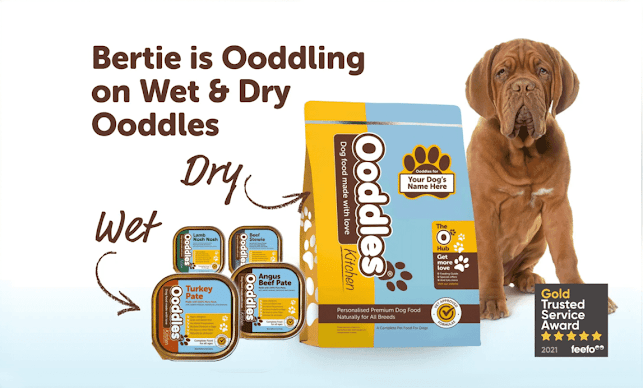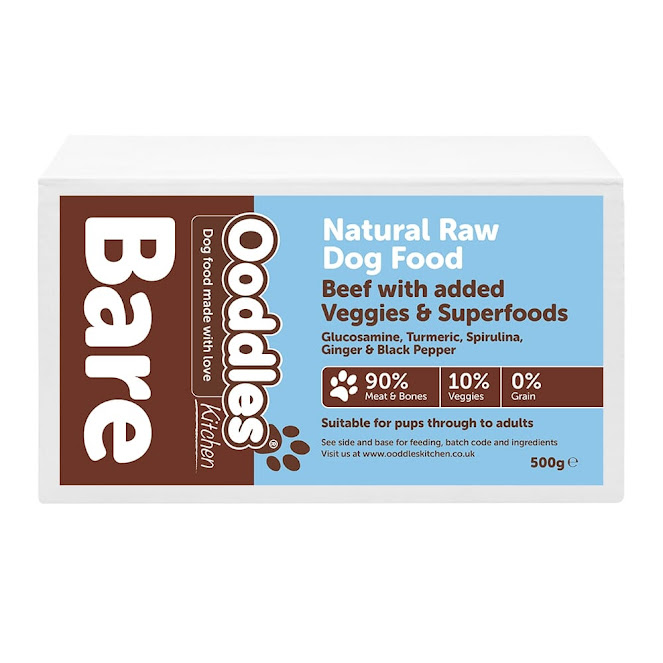Raw Dog Food Primer: 6 Steps To Get Started
I can't recollect precisely why I began taking care of a crude canine food diet, however I did no different either way. There were positively enough convincing motivations to quit taking care of my canines handled food.
All things considered, many canine food fixings come from a science lab, not nature.
In any case, you likely needn't bother with the subtleties of why I changed to crude. I'm expecting in the event that you've perused this far, you're prepared to change your canine to crude as well.
In any case, you're presumably somewhat terrified to do the switch …
You probably stress that your canine will gag on bones or that his eating routine will not be adjusted. Furthermore, those are substantial concerns!
I'll always remember lying on the floor, taking care of my canine a crude chicken wing and thinking "This is it … this is the manner by which I murder my canine." I recollect what it resembled beginning my canines on crude. So I'm not going to advise you not to be terrified.
Change is terrifying and I realize you love your canine a ton. Else, you'd simply be throwing some modest supermarket food in a bowl as opposed to understanding this.
So my responsibility is to wipe out your feelings of trepidation so you can move your canine to a protected, top notch diet. Also, I'm up for the test on the grounds that:
I'm a crude taking care of reproducer and have raised many little dogs and seniors on a crude eating regimen throughout the most recent 25 years.
I've committed a great deal of errors and I can assist you with staying away from them.
I have a degree in physiology and co-composed a Raw Food Certification Course with regarded pet food nutritionist and veterinarian, Dr Marion Smart DVM PhD.
In particular, I will utilize that schooling and experience to show you, in 6 straightforward advances, how to make your own crude eating regimen without any preparation.
So on the off chance that you're considering changing to crude, I extol you! Furthermore, I respect that you're doing your exploration first and not simply hopping in …
A lopsided crude eating routine fouled up can hurt your canine.
In any case, don't stress over that … in the event that you adhere to these standards, you will not turn out badly. I will attempt to give you a logical crude eating regimen that is not difficult to follow and comprehend.
All of your dog’s energy requirements come from just three sources: protein, fat and carbohydrate. These macronutrients are the only source of calories (energy) for your dog.
Protein is made of building blocks called amino acids. Amino acids are important not just for energy, but to assemble tissues in your dog. They also make enzymes that fire important metabolic processes.
Fat is a rich source of energy. Pound for pound, fat contains double the amount of calories as protein. So you need to watch the amount of fat that goes into your dog. But make no mistake … fat is an important nutrient. It protects your dog’s cells and it’s used to make hormones and fat-soluble vitamins.
Both protein and fat are essential nutrients … that means your dog will literally die without a steady supply. But carbohydrates aren’t essential … your dog will do just fine without them.
This doesn’t mean some carbohydrates aren’t valuable. Some forms of carbohydrate can boost your dog’s immune system and reduce his risk of cancer and other diseases. But not all carbohydrates carry this benefit … and we’ll circle back to that in a bit.
RELATED: Why your dog needs fewer carbohydrates …
Getting The Fat Right
The foundation of your dog’s raw diet is proteins and fat. This makes up most of his meal. It’s as simple as buying ground meat or chunks and putting them in your dog’s bowl. But balance is important.
This means feeding a diet that’s about 10% to 20% fat total, including any fats like fish oil that you add to your dog’s raw diet. The remaining foundation of your dog’s raw meals will be protein.
It’s important to keep your fat within this range. Here’s why …
Too Much Fat
Fat is relatively devoid of vitamins and minerals … and it contains a lot of calories. This presents a challenge if the diet is too high in fat.
If your dog’s diet contains more than 20% fat, it will cannibalize his vitamins and minerals. The resulting diet can be nutritionally incomplete. This is especially important for puppies and older dogs, who need more nutrients than adult dogs.
Too Little Fat
If the fat dips much below 10%, you’ll start to see dry, itchy skin in your dog. This is one of the first signs of fat deficiency. So try to stay within the 10% to 20% range most days.
Here’s a list of the typical fat percentage in common meats you can buy at the butcher or grocery store:Fat Content Of Common Food
Protein is made of building blocks called amino acids. Amino acids are important not just for energy, but to assemble tissues in your dog. They also make enzymes that fire important metabolic processes.
Fat is a rich source of energy. Pound for pound, fat contains double the amount of calories as protein. So you need to watch the amount of fat that goes into your dog. But make no mistake … fat is an important nutrient. It protects your dog’s cells and it’s used to make hormones and fat-soluble vitamins.
Both protein and fat are essential nutrients … that means your dog will literally die without a steady supply. But carbohydrates aren’t essential … your dog will do just fine without them.
This doesn’t mean some carbohydrates aren’t valuable. Some forms of carbohydrate can boost your dog’s immune system and reduce his risk of cancer and other diseases. But not all carbohydrates carry this benefit … and we’ll circle back to that in a bit.
RELATED: Why your dog needs fewer carbohydrates …
Getting The Fat Right
The foundation of your dog’s raw diet is proteins and fat. This makes up most of his meal. It’s as simple as buying ground meat or chunks and putting them in your dog’s bowl. But balance is important.
This means feeding a diet that’s about 10% to 20% fat total, including any fats like fish oil that you add to your dog’s raw diet. The remaining foundation of your dog’s raw meals will be protein.
It’s important to keep your fat within this range. Here’s why …
Too Much Fat
Fat is relatively devoid of vitamins and minerals … and it contains a lot of calories. This presents a challenge if the diet is too high in fat.
If your dog’s diet contains more than 20% fat, it will cannibalize his vitamins and minerals. The resulting diet can be nutritionally incomplete. This is especially important for puppies and older dogs, who need more nutrients than adult dogs.
Too Little Fat
If the fat dips much below 10%, you’ll start to see dry, itchy skin in your dog. This is one of the first signs of fat deficiency. So try to stay within the 10% to 20% range most days.
Here’s a list of the typical fat percentage in common meats you can buy at the butcher or grocery store:Fat Content Of Common Food
Step 3: Add The Organ Meats
Step 4: Balance The Fats
Step 5: Add Vegetation
Step 6: Complete The Balance


Comments
Post a Comment